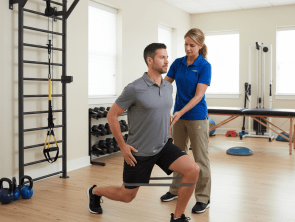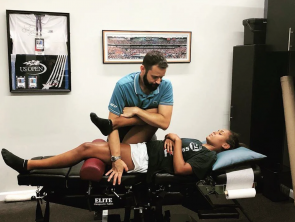WELLNESS BLOG

Physical Therapy in Raleigh: A Complete Guide to Recovery and Performance
Are you an active adult or athlete in Raleigh experiencing persistent pain, struggling to overcome an injury, or hitting a plateau in your performance? It can be incredibly frustrating when your body isn’t keeping up with your active lifestyle, whether you’re a corporate athlete balancing demanding work with daily runs, a dedicated tennis player, or an aspiring triathlete. You deserve to move freely, perform at your best, and enjoy a life without limits.
Our Favorite High-Tech Recovery Tools for Busy Professionals in Raleigh, NC
Busy professionals in Raleigh are balancing demanding careers with active lifestyles. Whether it’s early morning workouts, weekend races, or high-stress workdays, the physical toll adds
Why Active Adults in Raleigh Are Turning to PT for Long-Term Mobility
Raleigh is home to a growing population of high-performing professionals who value both career success and physical health. These “corporate athletes” balance long hours at

The Smart Athlete Blueprint: Longevity, Efficiency, and Injury Prevention for the Active Adult and Corporate Athlete
At Smart Athlete PT, we define the “smart athlete” as anyone who wants to stay active, perform well, and live pain-free – not just today,
What It’s Like to Get Treated with SoftWave at Smart Athlete Physiotherapy
SoftWave Therapy is a regenerative treatment that uses unfocused shockwaves to stimulate your body’s natural healing response—without needles, drugs, or surgery. It’s non-invasive, well-tolerated, and
Boost Tennis Performance with SoftWave-Enhanced Physical Therapy
Tennis is a sport that challenges nearly every part of the body. From explosive lateral movements to high-velocity swings, athletes are constantly pushing their joints,
Treating Hip Overuse Injuries in Tennis with SoftWave Technology
Tennis is a high-intensity sport that demands speed, agility, and repeated rotational movements—all of which place significant stress on the hips. Over time, this repetitive
Tennis Elbow and SoftWave: A Modern Approach to Pain Relief
Tennis elbow—formally known as lateral epicondylitis—is a painful condition that affects the tendons on the outside of the elbow. Despite the name, it’s not limited

Self-Assessment and Treatment of the Hip for Tennis Athletes
Hip pain and dysfunction are common problems with most tennis athletes from the recreational to professional level. The purpose of this article is to teach

Wanna Get Faster? Get Stronger!
Jeff Vajay, PT, CSCS Most runners live to run but when it comes to additional training techniques, that’s where it’s likely to begin and end. Exercise
